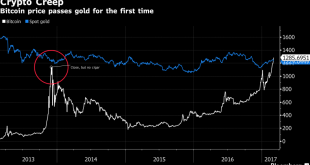NBER Working Paper 23864, September 2017, with Tamon Asonuma and Romain Ranciere. PDF. (Local copy.) Rejecting a common assumption in the sovereign debt literature, we document that creditor losses (“haircuts”) during sovereign restructuring episodes are asymmetric across debt instruments. We code a comprehensive dataset on instrument-specific haircuts for 28 debt restructurings with private creditors in 1999–2015 and find that haircuts on shorter-term debt are larger than those on debt...
Read More »“Sovereign Bond Prices, Haircuts, and Maturity,” CEPR, 2017
CEPR Discussion Paper 12252, August 2017, with Tamon Asonuma and Romain Ranciere. PDF. (ungated IMF WP.) Rejecting a common assumption in the sovereign debt literature, we document that creditor losses (“haircuts”) during sovereign restructuring episodes are asymmetric across debt instruments. We code a comprehensive dataset on instrument-specific haircuts for 28 debt restructurings with private creditors in 1999–2015 and find that haircuts on shorter-term debt are larger than those on...
Read More »“Sovereign Bond Prices, Haircuts, and Maturity,” IMF, 2017
CEPR Discussion Paper 12252, August 2017, with Tamon Asonuma and Romain Ranciere. PDF. (ungated IMF WP.) Rejecting a common assumption in the sovereign debt literature, we document that creditor losses (“haircuts”) during sovereign restructuring episodes are asymmetric across debt instruments. We code a comprehensive dataset on instrument-specific haircuts for 28 debt restructurings with private creditors in 1999–2015 and find that haircuts on shorter-term debt are larger than those on...
Read More »“Sovereign Bond Prices, Haircuts, and Maturity,” IMF, 2017
IMF Working Paper 17/119, May 2017, with Tamon Asonuma and Romain Ranciere. PDF. Rejecting a common assumption in the sovereign debt literature, we document that creditor losses (“haircuts”) during sovereign restructuring episodes are asymmetric across debt instruments. We code a comprehensive dataset on instrument-specific haircuts for 28 debt restructurings with private creditors in 1999–2015 and find that haircuts on shorter-term debt are larger than those on debt of longer maturity....
Read More »Digital Gold – For Now Caveat Emptor
Digital Gold On The Blockchain – For Now Caveat Emptor – Bitcoin surpasses gold price – a psychological and arbitrary headline – Royal Mint blockchain gold asks you to trust in the UK government – Royal Canadian Mint and GoldMoney blockchain product asks you to trust in government and the technology, servers, websites etc of the providers – Invest in a gold mine using cryptocurrency – but wait until 2022 for your gold...
Read More »Digital Gold – For Now Caveat Emptor
Digital Gold On The Blockchain - For Now Caveat Emptor - Bitcoin surpasses gold price - a psychological and arbitrary headline - Royal Mint blockchain gold asks you to trust in the UK government - Royal Canadian Mint and GoldMoney blockchain product asks you to trust in government and the technology, servers, websites etc of the providers - Invest in a gold mine using cryptocurrency - but wait until 2022 for your gold and trust the miners that it is there - Blockchain and gold will...
Read More »Currency Denomination Risk in the Euro Area
In the FT (Alphaville), Marcello Minnena explains what type of currency denominations of Euro area sovereign debt constitute credit events; and how markets assess the risk of such denominations. After the Greek default in 2012 new ISDA standards entered into force: contracts made since 2014 protect against euro area countries redenominating their debt into new national currencies [unless the debt is redenominated] into a reserve currency: the US dollar, the Canadian dollar, the British...
Read More »Re-Denomination Risk in France and Italy
On the FT Alphaville blog, Mark Weidemaier and Mitu Gulati argue that re-denomination risk in the Euro zone is most prominent in France and Italy. Bonds with CACs trade at higher prices. Most French and Italian [but not Greek] debt is governed by local law. … the governments could pass legislation redenominating their bonds from euros to francs or lira. … [But] some French and Italian bonds — bonds issued after January 1, 2013, with maturities over a year — have Collective Action Clauses...
Read More » Swiss Economicblogs.org
Swiss Economicblogs.org

